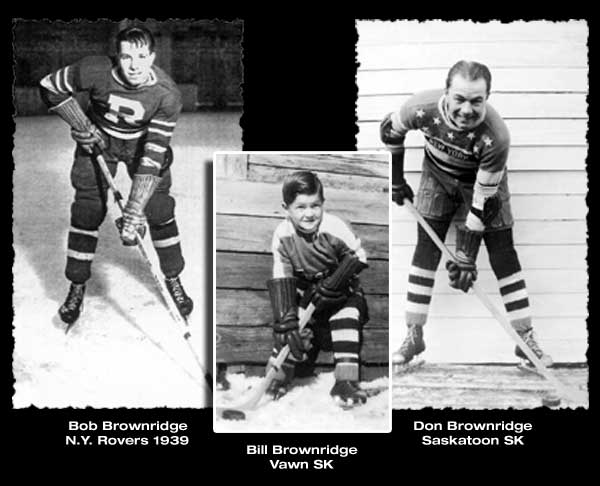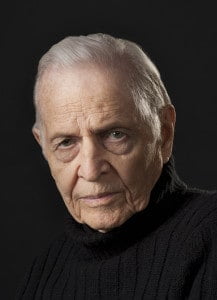Inspiration
In addition, with my home environment of the Canadian prairies cold for six months of the year, I grew up loving the wintertime, both its shining beauty and its starkness.
 It was within this environment of action and arctic weather that my brothers — Bob and Don — emerged as my role models, my heroes per se. I was mesmerized, watching as they cut down the ice, swooped in on the puck like a bird of prey, banked away sharply, then glided like a great eagle on an updraft. In later years, Bob even went on to star in the American Hockey League with the New York Rovers – farm team of the NHL’s New York Rangers. My brothers brought to life the power and poetry of hockey. I was a classic worshipper with Bob and Don as my idols.
It was within this environment of action and arctic weather that my brothers — Bob and Don — emerged as my role models, my heroes per se. I was mesmerized, watching as they cut down the ice, swooped in on the puck like a bird of prey, banked away sharply, then glided like a great eagle on an updraft. In later years, Bob even went on to star in the American Hockey League with the New York Rovers – farm team of the NHL’s New York Rangers. My brothers brought to life the power and poetry of hockey. I was a classic worshipper with Bob and Don as my idols.
This feeling was further emphasized when, in 1940 with Canada at war, they both went off to become pilots in the RCAF, with Don ferrying bombers all the way to India. Comparing them to myself left me in awe. They were strong, handsome, leading lives of high adventure in far away places. I was a kid with a gimpy leg sitting on a train-station platform in Saskatchewan. I was dazzled by them! Moreover, their lives gave me the hope and inspiration to dream that my life could also be something special.
Meanwhile, the quiet heroes were my parents, Roy and Vivian. They were always in the corners of my life – out of focus, always there, but overshadowed by my dynamic brothers. It wasn’t until I grew older that I began to truly appreciate their nurturing and support, for it was that which made everything possible for me.
From these familial roots I ventured into the world of art. I graduated from the Alberta College of Art (Calgary, AB., Canada) in 1957. Following that I was a professional graphic designer for some 30 years, finishing my career as Art Director in one the city’s top advertising firms: Francis, Williams and Johnson. During that time I received a Canada Council Grant in 1975 to paint the vanishing railroad architecture of the Prairies and that series of original paintings was widely exhibited. As well, in 1981 I received a commission from the Calgary Winter Olympic Development Association to render a series of serigraphs depicting the games’ events. There were later used as part of Calgary’s winning bid for the 1988 Winter Olympics.
Over the years, my art has been exhibited in galleries and art venues across the country. Most significantly, I have had exhibitions in Calgary’s famed Glenbow Museum and the National Museum of Science and Technology in Canada’s capital city of Ottawa.
Since 1988 I have had over 15 individual shows, most of which have sold out, and my paintings are presently available in three different Canadian galleries. The U.S. Olympic Centre in Colorado has purchased several pieces. I’ve been exhibited in Toronto’s Hockey Hall of Fame. Added to this are the many corporations, NHL hockey teams, NHL players, and hundreds of individuals who collect my art. Furthermore, I’ve appeared inside and on the front page of daily newspapers across the country, in magazines, and on CBC Radio and CBC TV including Newsworld.
In 1995 I left advertising so I could dedicate myself exclusively to painting. Since then I have also become a writer and illustrator of my own series of best-selling children’s books.
The Game

Bill Brownridge (centre) wearing rubbers over his moccasins, backstops the 1952-1953 Vawn Cougars to the North-Line Championship
But my view of hockey was far more than just fun, although that, in itself, was of great importance. I came to realize that the rink was where my friends and I received a crash course in behaviour and socialization. Not just in theory, but in reality. In an afternoon scrimmage the kids might encounter bullying, cheating, embarrassment, even a bruise or a scrape. Equally, they saw other qualities – courage, determination, patience, and discipline. Most important in my mind – a good hockey player had to be a team player, had to demonstrate selflessness.
Here in each session of “play” – without elaborate organization, equipment, or parental guidance – was life in a microcosm. The reason the good things always overcame and controlled the bad was because of “The Game”. I loved the game, they loved the game, and no bad behaviour could ever change our focus.
The Art
In the search for a distinctive voice, every serious artist must find themes that are powerful enough to keep them driving forward. In a world preoccupied with the sensational, the bizarre, and the vulgar, I find great enjoyment watching children at play. Their laughter, enthusiasm, and naivete are a source of endless fascination, especially when the setting is a hauntingly beautiful prairie or foothills landscape. These are the things I most love and respect in life.
My painting technique is impressionistic, and I have always been fascinated by the effects of light – its luminosity, its moods, its relationships and, of course, its colours. Bright colour is an important element in my painting. Working with the full chromatic scale is a real passion.
I use strokes or dots of colour that are close in tone and vibrate against each other (yellow beside blue, green beside purple). In this way I try to capture the incredible moods of light and shadow on snow. And my work is often filled with action. I have studied movement all my life and usually you will find the power of diagonals in every composition, most often to illustrate the vigor, vitality, and enchantment of children at play.
I also relish “fat” paint and, now more than ever, I love to use its texture and encrustment.
I usually start on a canvas or hardboard panel with a colour primer. I often have a scene in mind, either from memory or from the landscape of the local area. I sketch the composition with a light charcoal line drawing, which is later lost as the paint builds up.
Spontaneity is vital in my approach to painting, I work directly, and I usually finish a piece in three or four sessions.
The Artist
 Bill Brownridge graduated from the Southern Alberta Institute of Technology and Art (now the Alberta College of Art) with a diploma in advertising art. In 1975-76 he won a Canada Council grant to paint and draw the disappearing railroad architecture of the prairies. He was commissioned in 1981 by the Calgary Olympic Development Association to render a series of serigraphs depicting the sporting events of the Olympic Winter Games. These works were used as a part of Calgary’s winning presentation (both in print and film) to the International Olympic Committee for the 1988 Olympics.
Bill Brownridge graduated from the Southern Alberta Institute of Technology and Art (now the Alberta College of Art) with a diploma in advertising art. In 1975-76 he won a Canada Council grant to paint and draw the disappearing railroad architecture of the prairies. He was commissioned in 1981 by the Calgary Olympic Development Association to render a series of serigraphs depicting the sporting events of the Olympic Winter Games. These works were used as a part of Calgary’s winning presentation (both in print and film) to the International Olympic Committee for the 1988 Olympics.
Bill Brownridge has participated in exhibitions with the Alberta Society of Artists, the Ontario Society of Artists, the Burnaby Print Show, the Young Contemporaries of Canada, the Red River Exhibition, the Calgary Exhibition and Stampede, the National Museum of Science and Technology in Ottawa and Calgary’s Glenbow Museum.
In 1993 Bill Brownridge was commissioned to design new uniforms for the NHL’s Calgary Flames Hockey Team. Later, in 1995, he wrote and illustrated his first children’s book “The Moccasin Goalie”. It was very well received and is into its second edition. The sequel, “The Final Game” tells of the continuing adventures of Danny Moccasin.
His works are represented with many corporations and private collections, and in the homes of NHL players and coaches. Bill was also chosen as one of twelve artists featured in an exhibition during the NHL all-star game in February 2001. Bill’s accomplishments also include participation in Calgary’s “Udderly Art” project in 2000 with his cow, “Hockeycow” being auctioned for $51,000.

